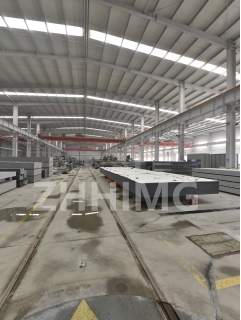Optical waveguide positioning devices are important components that are utilized in various applications. These devices are responsible for the accurate positioning of the optical waveguide in order to ensure efficient transmission of light signals. In order to achieve optimal performance, it is important to use and maintain the granite components that are part of these devices. The following are some guidelines on how to use and maintain granite components for optical waveguide positioning device products.
1. Proper handling and transportation
The first step in using granite components for optical waveguide positioning devices is to ensure that they are properly handled and transported. Granite is a hard and dense material that is susceptible to damage if it is not handled properly. During transportation, the components should be packaged and secured to prevent any damage from occurring during transit. When handling the components, care should be taken to avoid dropping them or subjecting them to any kind of impact.
2. Regular cleaning and maintenance
Granite components should be cleaned regularly to prevent the buildup of dirt and dust. This can be done using a soft cloth and a mild detergent or granite cleaner. It is important to avoid using abrasive cleaners or materials that could scratch the surface of the granite. After cleaning, the components should be thoroughly dried to prevent any moisture from getting trapped inside.
3. Proper storage
When not in use, granite components should be stored in a dry and secure location. Exposure to moisture and humidity can cause damage to the granite over time. It is also important to protect the components from extreme temperatures and direct sunlight, as these can cause the granite to expand or shrink, leading to cracks and other damage.
4. Regular calibration
Optical waveguide positioning devices rely on precise and accurate calibration in order to function properly. This means that the granite components that are part of these devices must be calibrated regularly to ensure that they are providing accurate measurements. Calibration should be done by a trained technician using specialized equipment to ensure that the components are within the required tolerances.
In conclusion, using and maintaining granite components for optical waveguide positioning devices requires diligence and care. Proper handling, regular cleaning and maintenance, proper storage, and regular calibration are all important steps to ensure that these components provide accurate and reliable performance over time. By following these guidelines, users can maximize the lifespan and performance of their optical waveguide positioning devices.
Post time: Nov-30-2023

